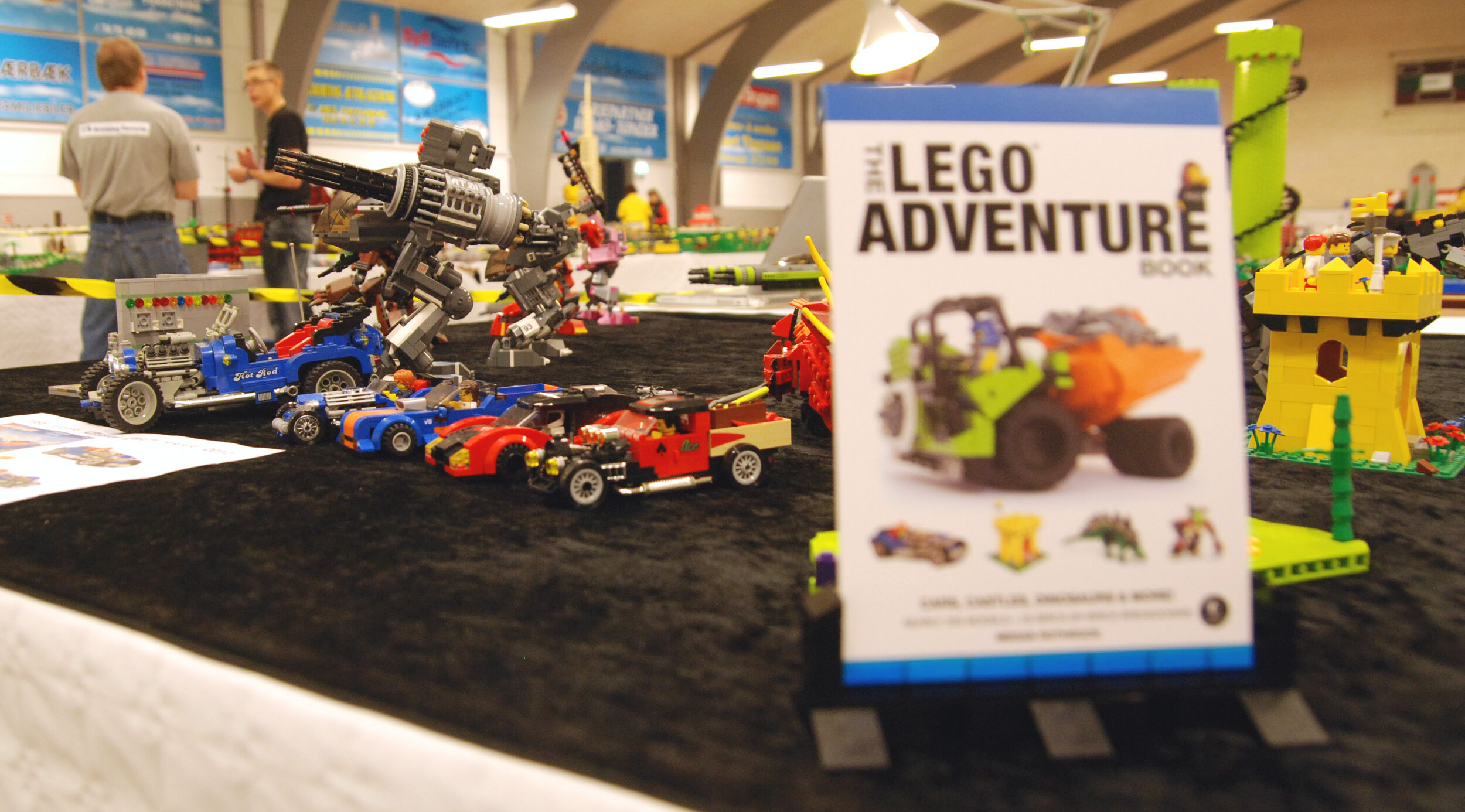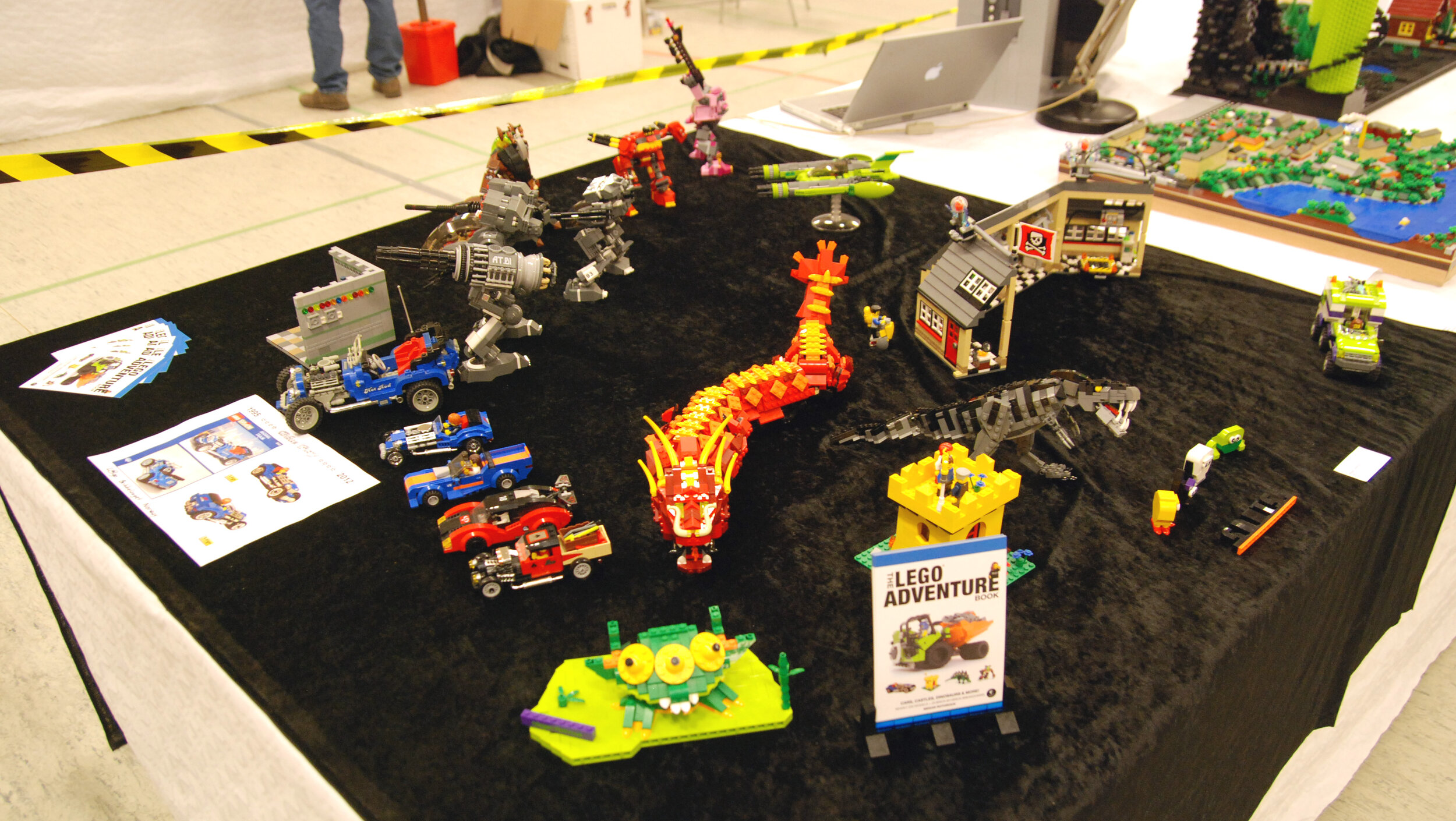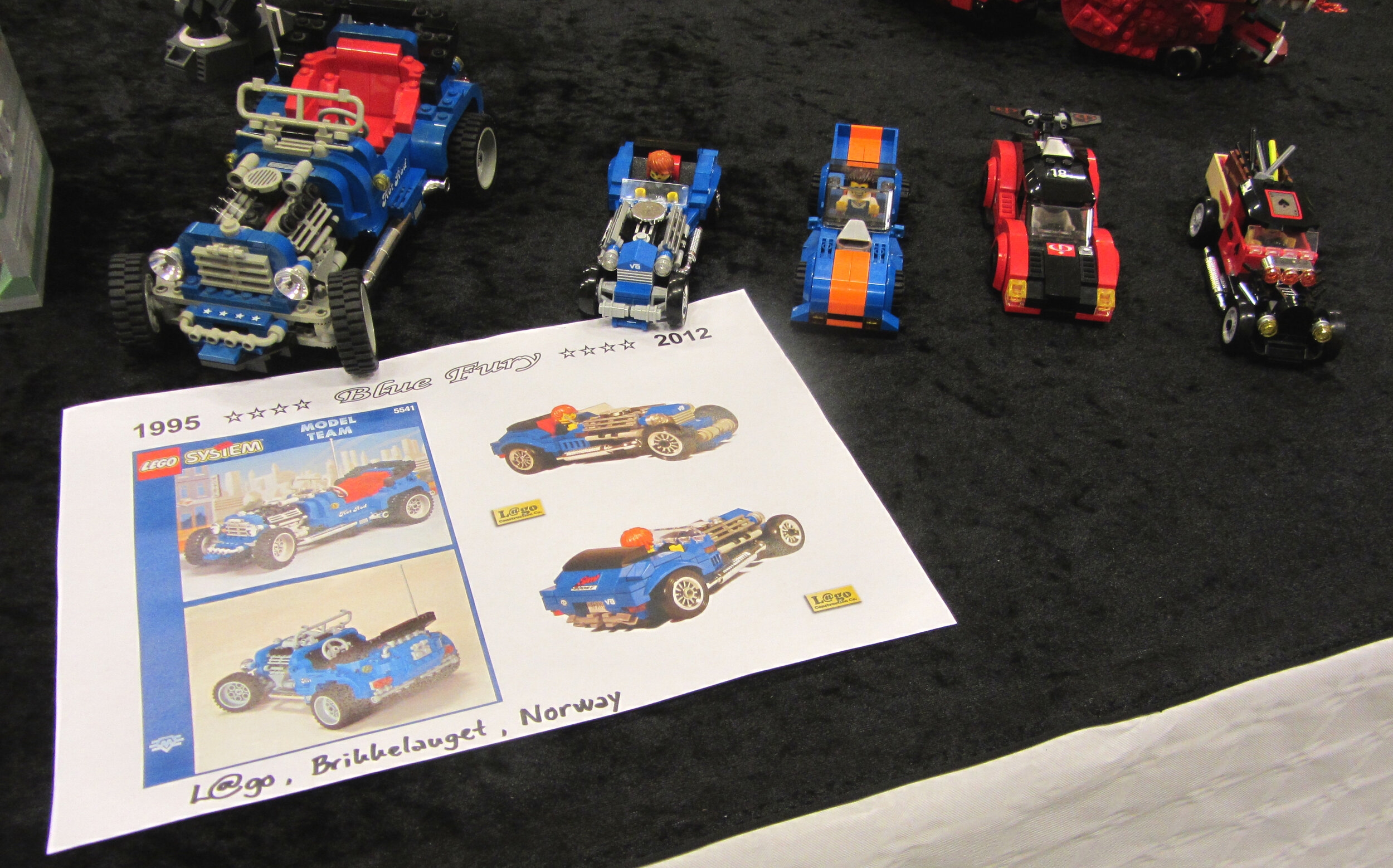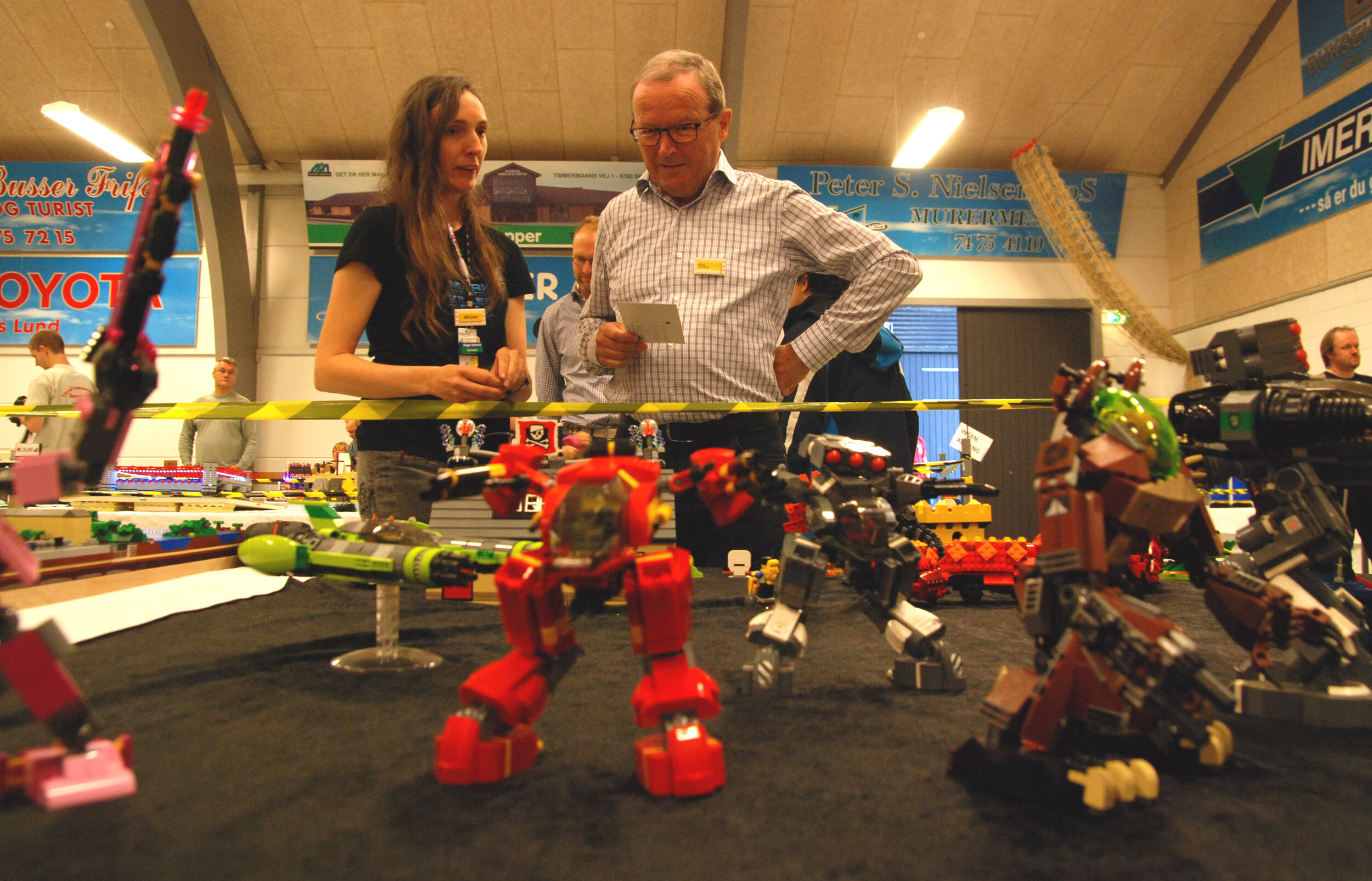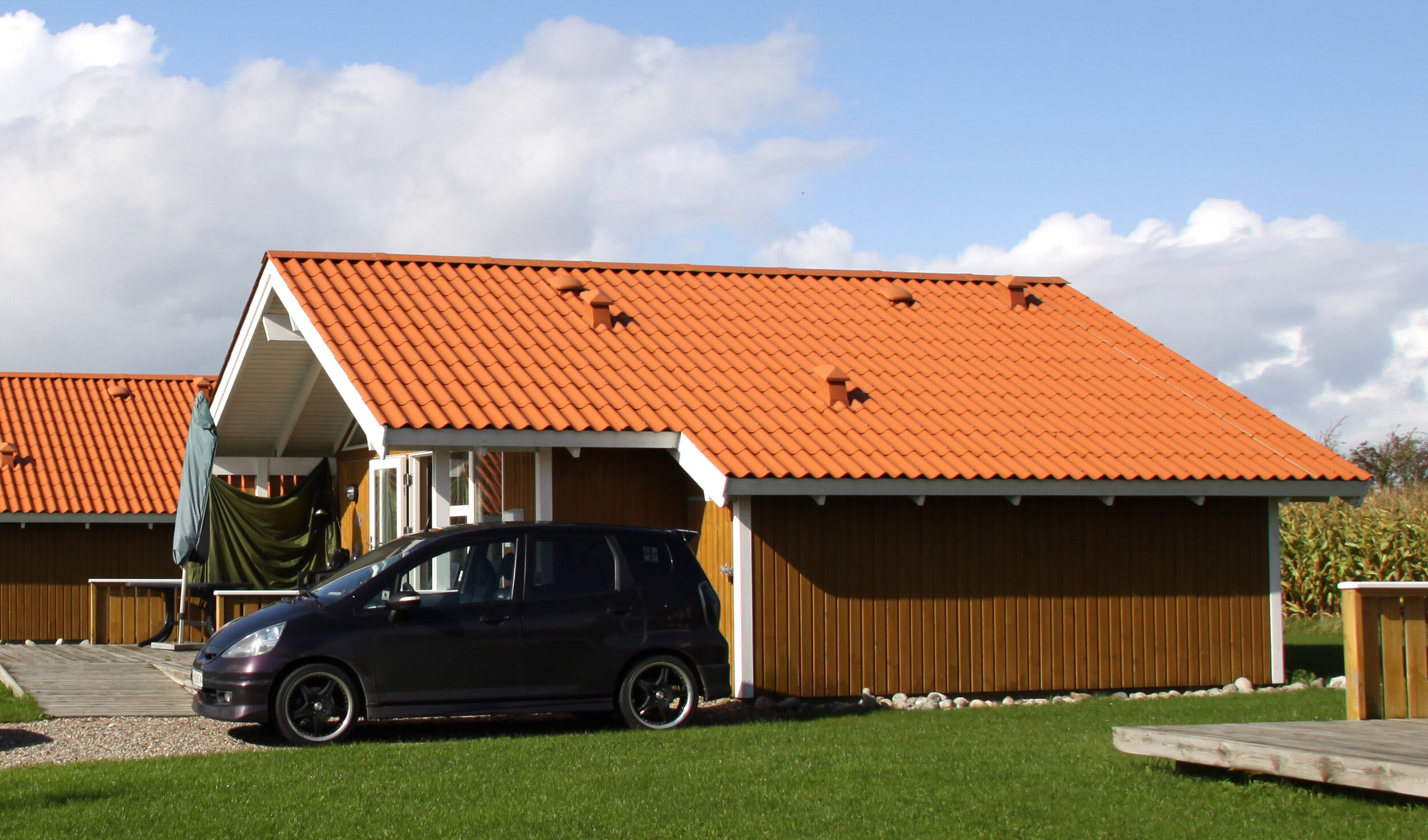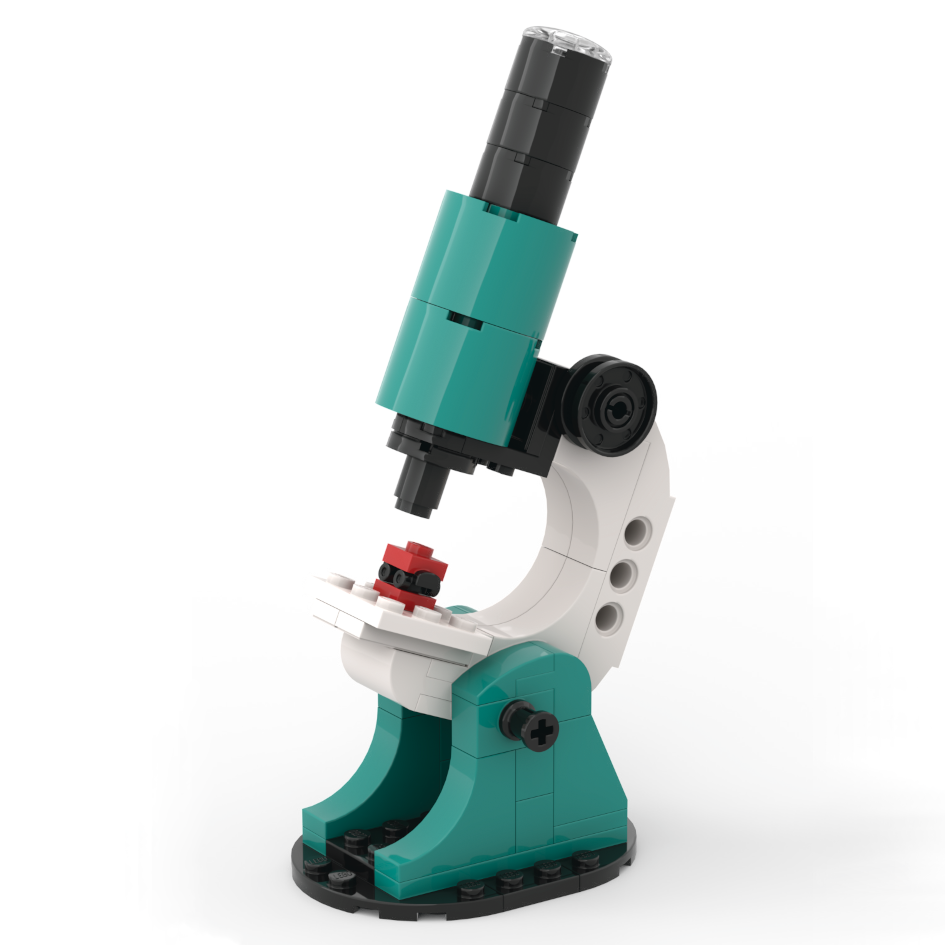Debuting as an AFOL… at the Mothership of All Events
/Today is AFOL Day at the LEGO House in Billund, which is the sort-of-official start of the Skærbæk Fan Weekend, the world’s most international LEGO event. I figured this would be a good day to tell you about my very first encounter with other adult enthusiasts of the brick—you see, I dove straight in at the deep end!
Me at my very first LEGO event, with my new friends Megan Rothrock and Mark Stafford.
Many people probably start their AFOL life when they meet somebody else who turns out to be a LEGO fan, and then visit a local show, before maybe eventually working their way up to an international event. Not so with me: My very first encounter with AFOLs was at the LEGO Fan Weekend (now Skærbæk Fan Weekend) in 2012, which makes this sort of an anniversary year for me: It’s the tenth year of me going to LEGO events (I just managed to squeeze in LEGO World Copenhagen before the world shut down last year).
I suspect the story of me rediscovering LEGO as an adult is similar to the stories many of BrickNerd’s readers have. I’ve covered quite a bit of it in an earlier article, but the short version goes like this: I discovered 10182 Café Corner, bought one, then proceeded to buy a whole lot of other stuff, started to build my own MOCs, stumbled across the Eurobricks forums, and created a Flickr account so I could post pictures of my new builds, which mainly consisted of small car models.
The Initial Spark
I got some feedback on Eurobricks and on Flickr, but mostly I just kept building away and didn’t think much about sharing my stuff in other ways—until one day in November 2011, when a guy named Chris Malloy decided to post one of my builds on an online blog you may have heard of called The Brothers Brick. I had been on Flickr since January that year, and below you can see a contemporary screenshot of the post… and its direct impact on my Flickr stats:
It may be difficult to see, but in one day I had 5,831 views, which was a lot considering my total from January to November was just over 38,000. In other words, one sixth of my total views since the start came as a direct consequence of that post.
But it also had another consequence which is much more relevant to this story. You see, a nice lady called Megan Rothrock saw the post, clicked through to my Flickr photostream and liked my builds. She was in the process of putting together a book called the LEGO Adventure Book, so a few months further into that project she sent me a message on Flickr asking me whether I’d be interested in being part of it.
Being a total newcomer to the LEGO universe I had never heard of Megan, but I figured being in a book sounded like fun, so I said yes. Little did I know about the all-star team she was gathering for the book, that I was lucky enough to be considered worthy of being a part of—as you can see from the picture below, this is the definition of good company, containing two current LEGO designers, two former LEGO designers (including a true legend), the AFOLs behind two successful LEGO Ideas sets, plus a number of other great builders. And me!
Good company, wouldn’t you say?
Over the next couple of months Megan and I were bouncing ideas off each other for Chapter 3, my chapter—because I got involved relatively late in the process, my involvement was pretty much limited to providing clean photos of cars I had already built. This would change for the LEGO Adventure Book 2, but that’s a different story.
We eventually got closer to the publishing date, but before that, the 2012 LEGO Fan Weekend was coming up in Skærbæk, Denmark. Megan was still the only adult LEGO fan I had ever talked to, albeit only on the phone, because I had only been involved with other AFOLs through Eurobricks and the online forum of the Norwegian LUG, Brikkelauget. Until September 2012, I had never met an AFOL in person, even though I got back into the LEGO hobby in 2009.
My Three Big Fears
There were several reasons why I hadn’t sought out any physical events—and I assume that other people will recognise at least one of these, maybe even all three: Firstly, I was initially convinced that there couldn’t possibly be many other people like me in Norway. I thought the whole AFOL thing would be mainly international, so I didn’t believe there were any LEGO events in my country. I was, of course, wrong.
Some say he pours gasoline on his cereal and that his brain contains colour-coded wires. All we know is…
Secondly, I was quite frankly still a bit embarrassed about being into LEGO as an adult. I knew, of course, that I was building my own stuff—without building instructions—and I also knew that I wasn’t half bad at doing it. But I still feared that people would judge me as a grown-up who was still “playing with LEGO”. I actually worked this into the book, as you can see in the picture on the right—my minifigure sigfig/avatar (or stigfig, as I like to call him) makes a joke about being anonymous.
And thirdly, while I’d had some meaningful online discussions on Eurobricks and understood that there were some “normal” people there, I was under the distinct and embarrassingly stereotypical impression that (and you’ll have to forgive me for this!) an AFOL would be, let’s see… balding, overweight, German, overly enthusiastic about trains, and probably be seriously lacking social skills.
The book that started it all
Again, and I’m very happy to say this, I was wrong. And for the record: I’m not saying there’s anything wrong with being either balding, overweight, German, overly enthusiastic about trains, or lacking in social skills—in fact, I now have good friends who fit all these descriptions (even if nobody fits all of them at once), and they are lovely people!
Anyway, I digress. The point was that Megan, being a Billund inhabitant at the time, started to apply some pressure to get me to go to Skærbæk. “It’ll be fun,” she said, “we’ll set up a table with book stuff!” And I had to admit it did sound like fun. So despite all my preconceptions, I got on the Norwegian LUG forum and had a chat with the other Norwegians who were going… only to find out that the event was full! More than 300 participants from 29 countries had signed up, and there was no more room.
My AFOL Life Begins
Luckily, that turned out to be nothing but a temporary snag because one of the other Norwegians had to cancel, and I was able to take his place—both at the event and in the cabin where he was supposed to have stayed. So I was all set! And very nervous. I packed my boxes, loaded the car, took three ferries, drove about 800 kilometres… and walked through the big door in the back of this picture at around 4PM on Friday, September 28th, 2012:
The door to my AFOL life. Literally. Photo by Øyvind Steinnes (one of the weird and wonderful Norwegians)
It’s a cliché, but my life would never be the same again.
Some of the first people to greet me were a weird and wonderful bunch of Norwegian AFOLs, who welcomed me as one of their own (which of course technically I was). They told me where to set up the modular buildings I had brought for the big city layout, and then pointed me to the other hall where I’d find Megan.
As I said, I didn’t really know much about Megan. But apart from being the author of the book, she had previously been employed as a LEGO designer in Billund, and her partner at the time was Mark Stafford, who has now been a LEGO designer for fifteen years. Needless to say, getting to know these two opened all kinds of doors—so while some people would be completely starstruck just by seeing them, I just said ‘hi’ and shook the hand of whoever they introduced me to. For example this guy, who I have to admit I had heard of:
Kjeld and I.
Yes, that is me, at my first ever LEGO event, randomly discussing my minifig-scale version of the 1995 Blue Fury hot rod… with none other than Kjeld Kirk Kristiansen, grandson of the founder of the LEGO company and current owner of said company, and one of the wealthiest men in Denmark. I didn’t know that, but being a proper car enthusiast, he was apparently involved with the development of set 5541, which was the reason he was so interested to see my version. And he was just a nice guy.
The list goes on, of course. I met Jørgen Vig Knudstorp, then-CEO, who is often credited with saving the company back in the early 2000s. I took a selfie with Jamie Berard, designer of the early modular buildings, which brought me back into LEGO in the first place. And I said hi to several other LEGO designers who were walking the halls.
Of course, this being my first outing in the AFOL world, I almost assumed this was normal! I didn’t really realise until much later how extraordinarily lucky I was to pretty much enter this realm backwards—I got featured in a book with international release, then jumped in and got to meet all the cool people at the very beginning, before I’d even met many other AFOLs.
A Fantastic First Impression
So what was the rest of the event like for me? Mind-blowing, of course, as I had never experienced anything like it before. I walked around the halls and marveled at the sheer quality of the builds on display. I had, of course, seen loads of pictures of impressive MOCs online, but it’s just something completely different to see things up close, walk around them to study them from different angles, and lean in to discover amazing NPUs. A few of the many highlights can be seen in the slideshow below:
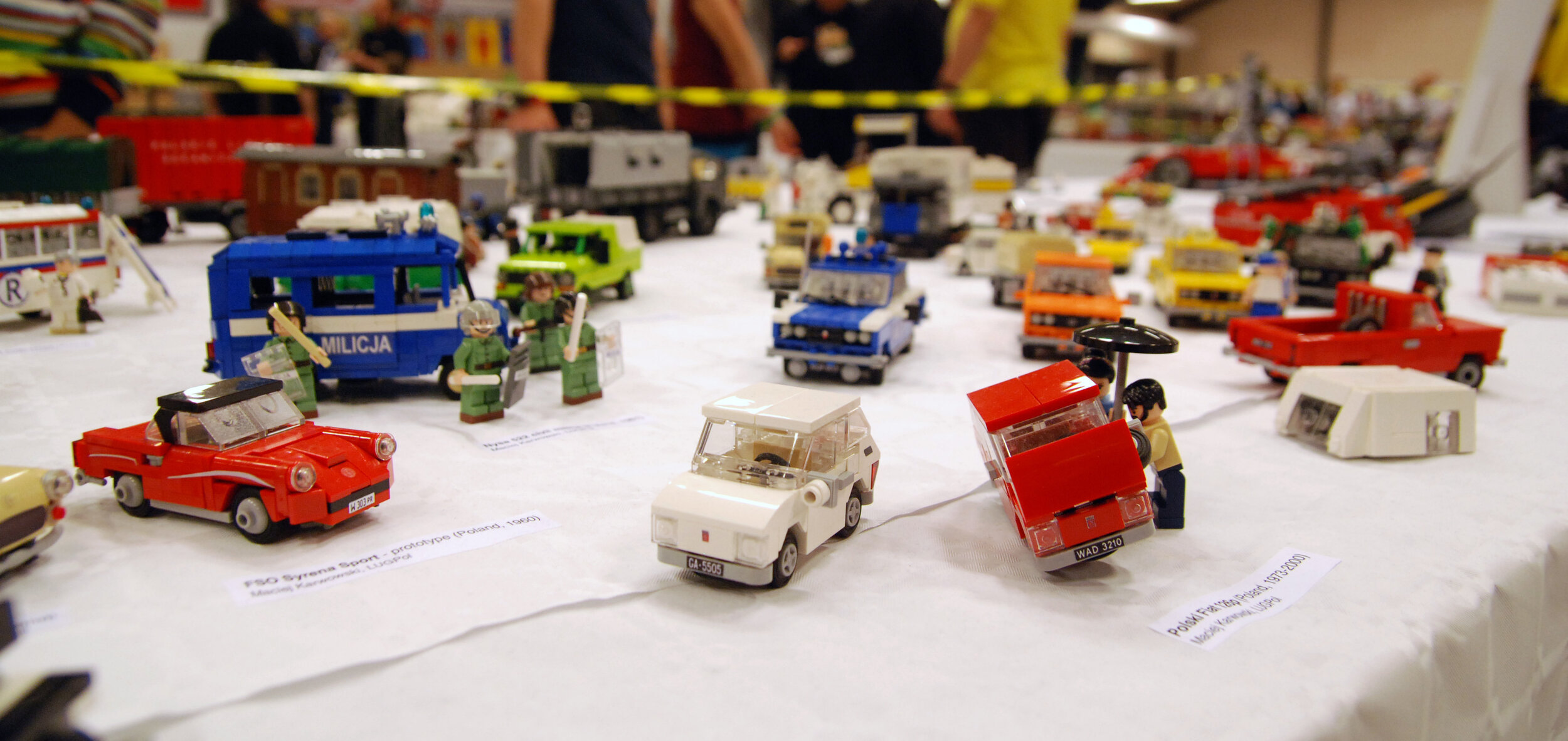
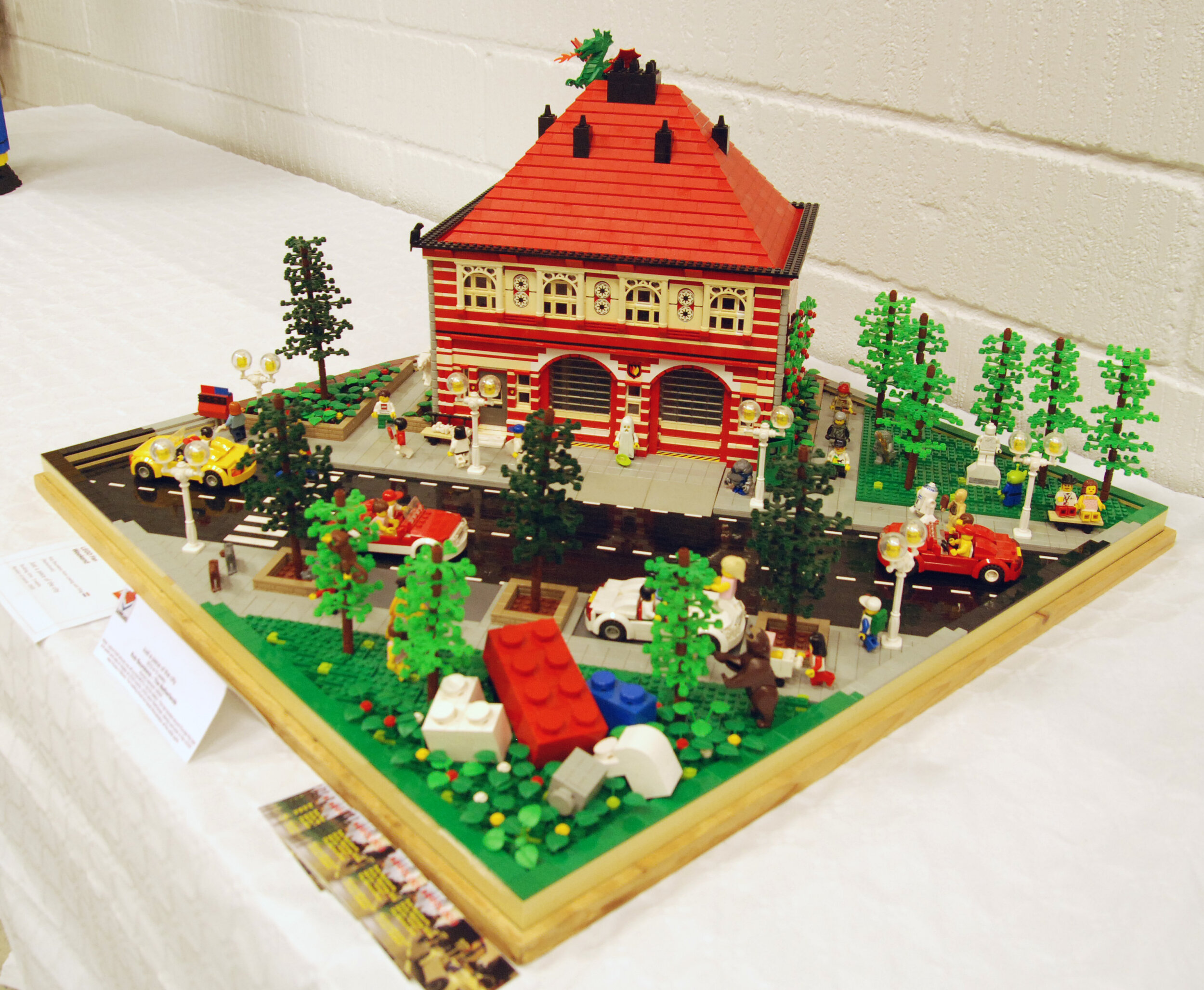
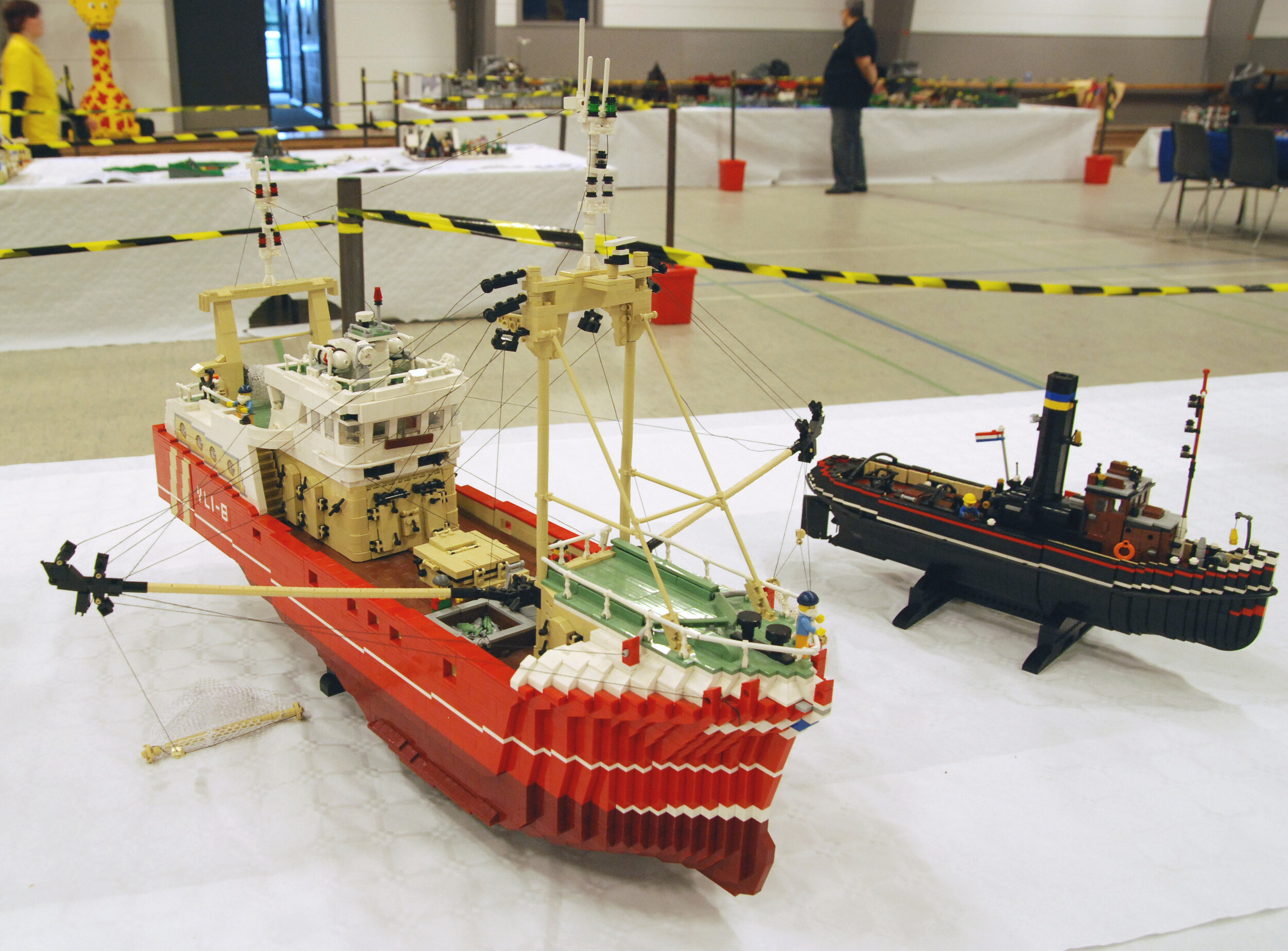
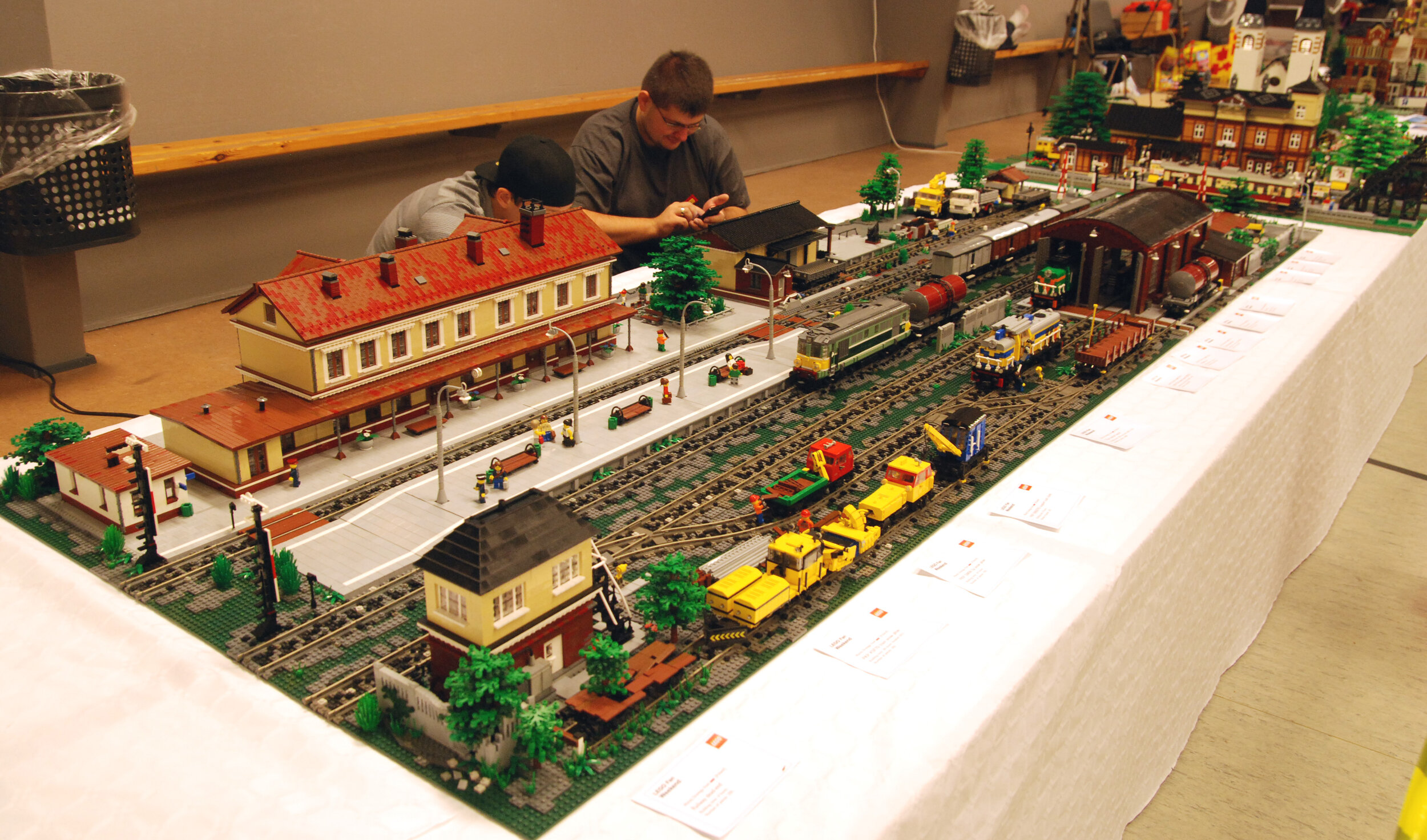
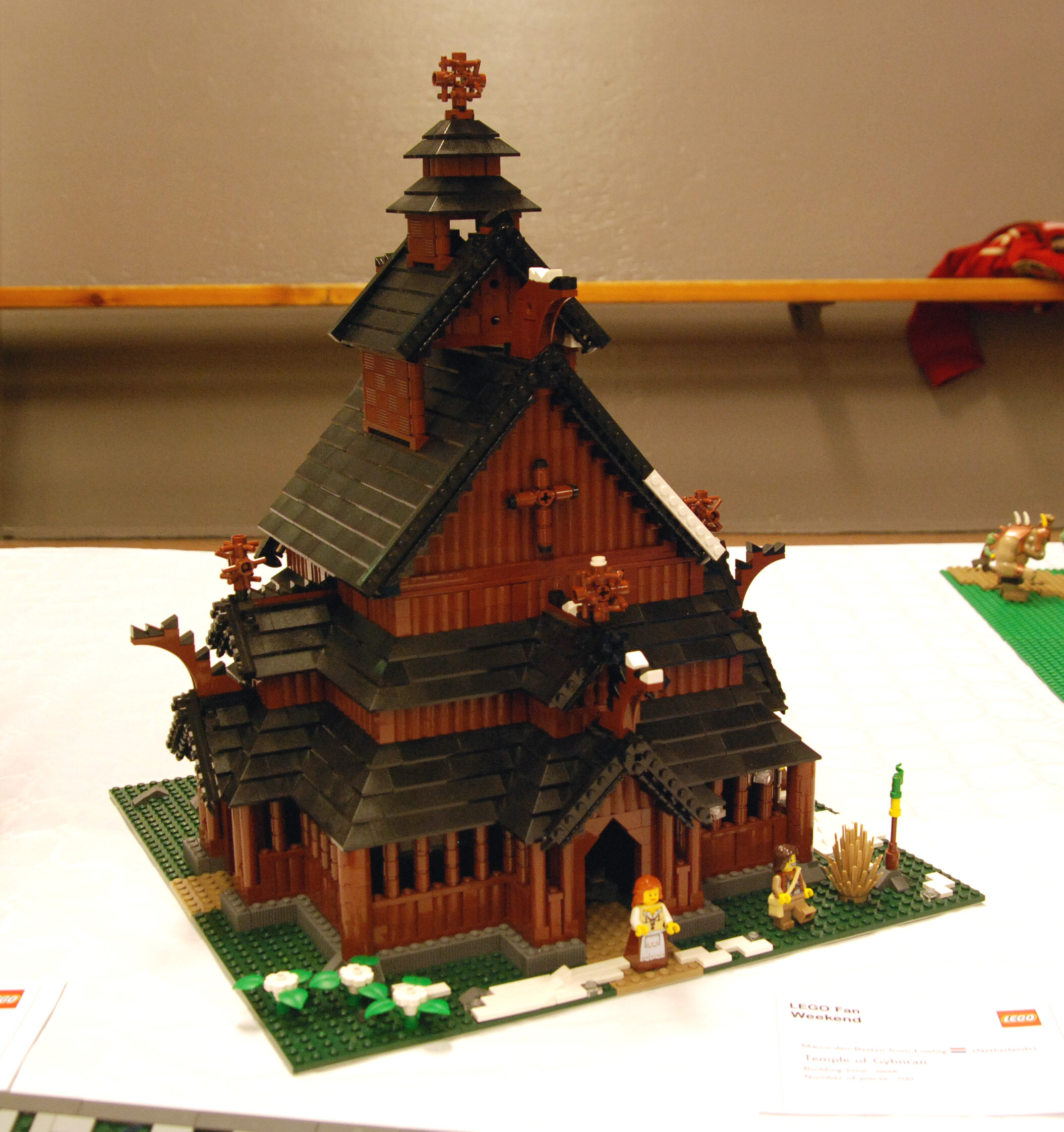
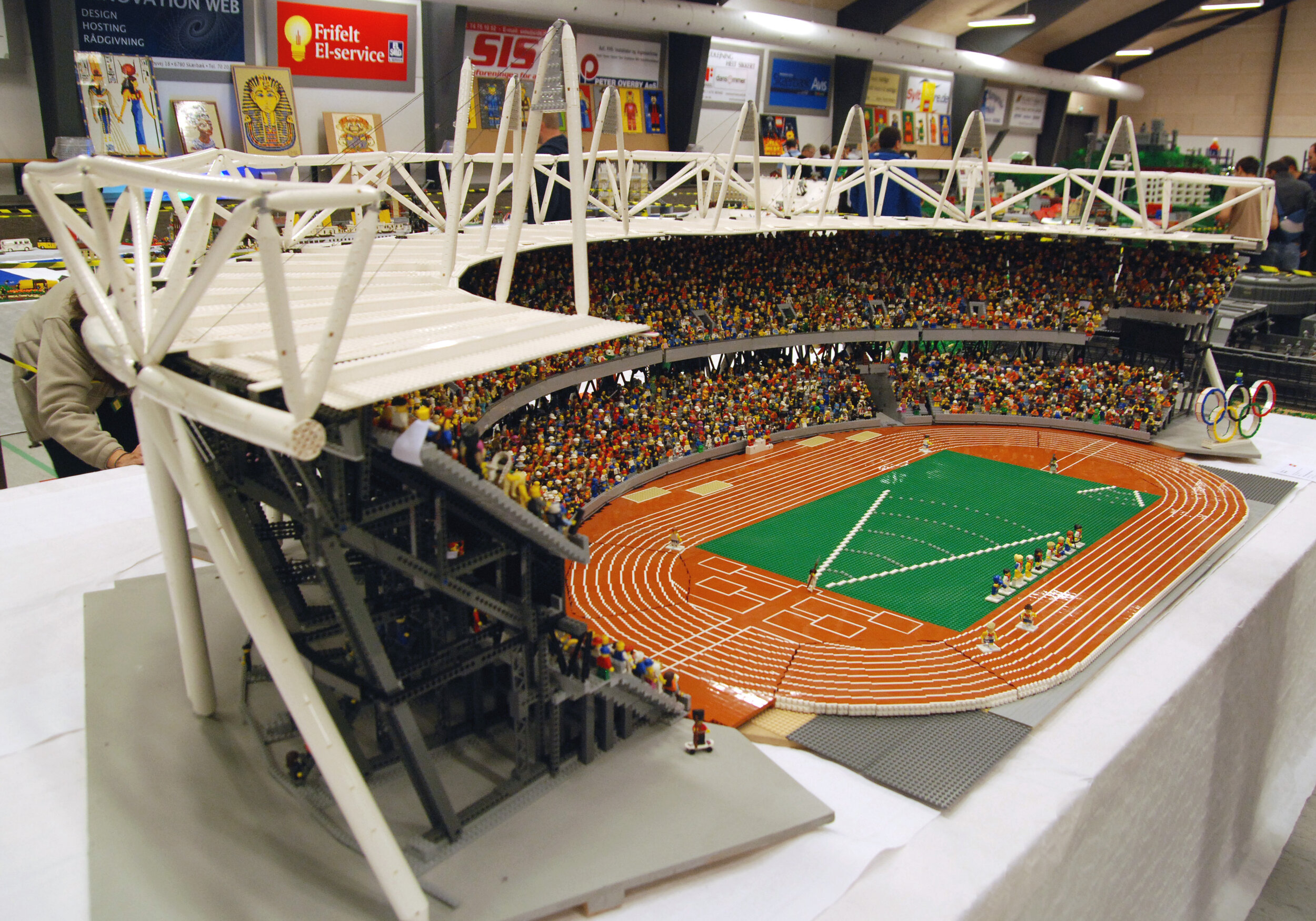
The fantastically detailed scale models of Maciej Karwowski (karwik)
Rob Beurskens’ building which, incredibly, predates the introduction of tan LEGO elements, meaning it’s all white which has different shades of yellowing, even though several parts came from the same set originally
The incredible minifig-scale ships of Arjan Oude Kotte (konajra)
Maciej Drwięga’s unbelievably detailed train diorama (which he has kept expanding ever since)
A lovely Norwegian stave church, which I obviously fell for, by fellow BrickNerd contributor Marco den Besten (‘Ecclesiastes)
And finally, the gigantic model of the Olympic Stadium in London, built by Ed Diment of giant model specialists Bright Bricks.
Many of these people are good friends of mine today, and I met them all for the first time during that weekend in the two halls in Skærbæk. I had so many lovely conversations about the builds that these and other people had put on display, and my own builds that were lined up on the LEGO Adventure Book table, along with other models from the book.
Meeting the Likeminded
As I mentioned, I stayed in a cabin with some other Norwegians, and that also gave me some eye-opening experiences. I said earlier that I initially pretty much believed I was the only Norwegian AFOL! By the time I got to Skærbæk, I had of course interacted a bit with others on the Norwegian LUG forum, so I was aware that there was a domestic community, but actually sitting down with them, within two days I went from this:
Notice the excited curiosity beaming from the face of the fresh AFOL in the middle of the picture. Photo by Øyvind Steinnes
… to this:
Overload. Photo by Øyvind Steinnes
Here, let me enhance that picture for you: →
This is what information overload looks like. Now, until I started looking for images for this article, I had no idea that this picture existed—I just stumbled upon it in the LEGO Fan Weekend 2012 Flickr album by my fellow LUG member Øyvind. But even if I didn’t know he took the picture, I actually vividly remember what went through my mind in this exact moment.
You see, I was feeling very much like a fly on the wall, listening to some crazy detailed discussion which I can’t remember what was all about, but it probably had something to do with how many possible attachment points some new minifig accessory had, or stud reversal techniques for use in situations with limited room, or whether Market Street could actually be counted as a modular building. In any case: It was a discussion unlike anything I had ever personally witnessed, and right after this picture was taken, I actually said out loud:
“Do you have any idea how weird this conversation sounds from the outside?”
To their credit, they didn’t disown me. I’m still a member of the same LUG, I consider these people friends… and my wife recently told me an eerily similar story about how, when she joined me for BrickCan in Vancouver a couple of years ago, she was left listening to me and some other AFOL talk exitedly about how we had just found the Minifigure Backpack with Bedroll in the Build-A-Minifigure containers at the local LEGO store… in dark green and lime!
It would appear I have been brought into the fold.
The Rest of the Event
What I probably remember best from the rest of the Fan Weekend itself, is the AFOL Evening on Saturday evening. Everybody gathered in a room that was, basically, too small, and thinking back on it now in these COVID-19 times, it seems almost claustrophobic. Then we were served a nice dinner prepared by the kitchen of the Skærbæk Feriecenter, the place that hosts the whole Fan Weekend, and then none other than Jamie Berard presented a new set he had designed, which nobody had seen up until then—at least I don’t think any pictures had leaked. So the excitement was genuine, as you can see from the picture below.
This was of course the Horizon Express, or rather a prototype of the Horizon Express, with stickers instead of what eventually became printed parts, and if I remember correctly, even some parts that had been painted because they didn’t yet come in the needed colours. (I could insert some cheap joke here about those AFOLs overly enthusiastic about trains, and there is at least one German in that picture, but I’ll refrain from that.)
Worth 700 Danish kroner? Silly question.
After that there was an auction, and I played my part as one of the items that came up for sale was a pristine instruction manual and sticker sheet for the 2012 LEGO Inside Tour set, the Piper Airplane. As you may have understood from a previous article, I’m a sucker for rare stuff, and this was definitely right up my alley, even back then. I couldn’t believe my luck when I managed to win it at a measly 700 Danish kroner! Granted, it was just a couple of pieces of paper, but still… I collected the pieces for it when I got home, and it’s one of the most treasured items in my ‘trophy cabinet’.
(The only thing missing to get it complete, was the printed tile saying “LEGO Inside Tour 2012”… and that ‘mysteriously’ arrived in my mailbox a little after I got back home. Nice people, these organisers!)
I had completely forgotten about this, but I ended up sitting next to some Polish AFOLs at the dinner. This picture was taken by one of them, Maciej Karwowski, and shows my surprise when some of them suddenly started singing the old Norwegian folk song “Nordmannen”, more commonly known as “Mellom bakkar og berg utmed havet”. Apparently, they were fans of Norwegian black metal, and had heard—and incredibly, learned!—a version of this song released by a band.
Not Your Average Monday
It’s still so organised, but just wait until they get inside.
You’d think that after everything was packed down on Sunday evening, when the halls were all empty and all the eventees were completely exhausted, it would all be over? Oh no. There was no room for a hangover on the Monday. We took the one-hour drive to from Skærbæk to Billund and bright and early, we were queuing outside the so-called “P-shop”, the LEGO employee store, where we would be allowed to shop LEGO sets at very nice prices.
The experience of seeing adult people darting around what is essentially a toy store, chasing the things they need, is something that can’t be explained. And even though legendary former LEGO community coordinator Kim Ellekjær Thomsen delivered his unforgettable “No Running!” speech standing on top of the counter beforehand there was, of course, some running… and the scenes in the car park afterwards were equally memorable, reminiscent of a game of Tetris:
My fellow countryman Øyvind’s Honda after the P-shop experience. From this car park in Billund, he drove 2,500 kilometres through Sweden and Finland to Tromsø, far beyond the Arctic Circle, a 28-hour trip. In a tiny Honda. That’s dedication. (I don’t think he has been to Skærbæk since.) Photo: Øyvind Steinnes
After that some of us were so lucky as to get an exclusive factory tour, where we would actually be able to see the addictive materials being made, all the way from plastic granulate to brand new, still-hot LEGO bricks—even though this was strictly a no-touch scenario, it was still a mesmerising experience. Others were able to gain access to the Idea House, a privately-owned museum that isn’t normally open for visitors, where a lot of older LEGO items are on display. The original house where the first LEGO factory was located, known as Ole Kirk’s House or the Lion House, is part of the museum, and LEGO history practically oozes from its walls.
What Makes It So Special, and Why Should You Go?
Within a couple of days of returning home, I had already posted on the Norwegian LUG forum that I was obviously not going to miss this ever again, and within the next 13 months I travelled to no less than nine LEGO events… in Norway, Denmark, Germany, Portugal, the UK, and the Netherlands. It’s safe to say it left a lasting impression on me, and like I said earlier, it truly changed my life. I guess you could say that this being my first outing, it was always going to be special—but I still think Skærbæk is something else, and there are several reasons for that.
The country. Being located in Denmark, the Skærbæk Fan Weekend is literally in LEGO land, and this makes it special in itself. AFOLs from other countries will want to make the “pilgrimage” to the Home of the Brick at some point if they can afford it, and Skærbæk is a good opportunity.
The internationalness (yes, that’s a word!). As I mentioned, there were 29 nationalities present back in 2012, and that number hasn’t decreased in the following years. If you want the event that gathers the biggest variety of international LEGO fans, Skærbæk is it.
The visitors. Nowhere else will you see the top brass of the company randomly walking the halls (although you can normally spot where they are from the crowd following them, thinking that nobody will notice them as long as they are quiet), as well as a big number of more or less high-profiled LEGO designers.
The closeness to the LEGO Group. Even though what was originally known as the LEGO Fan Weekend officially ceased to exist in 2014, it re-emerged as the Skærbæk Fan Weekend the following year, and has kept growing ever since. Officially, the Fan Weekend isn’t LEGO’s own event anymore, but the company still plays a huge part in the program.
From 2017, LEGO House. The annual changeover of the fan models in the Masterpiece Gallery happens (in a normal year, anyway, this year is a bit different due to the pandemic) on the day before the AFOL Day, so there are several new items to see—and this also acts as an extra draw to get renowned international AFOLs to Skærbæk, seeing as they’ve already traveled to Denmark and the event starts immediately after the changeover. The AFOL Day is also now an integrated part of the Skærbæk Fan Weekend, with presentations by LEGO designers and other employees, and there is normally an opportunity for the fans to have their LEGO sets signed by the designers.
And last, but certainly not least: The attendees. Obviously, there are nice people at any LEGO event, and I’ve been to a few, but Skærbæk is a melting pot with so many different cultures coming together. You just won’t get that at any domestic event that doesn’t have a big international turnout, and for me, it’s the one event where I can meet the majority of my international AFOL friends. Indeed, It’s no longer important for me to put my models on display in the hall, and I don’t necessarily need to spend a lot of time walking around studying the other stuff on show. It’s the people I’m coming back for.
Flags of 18 of the 29 countries represented at the 2012 LEGO Fan Weekend. Photo: Maciej Karwowski
The Fine Print
As I’m writing this it’s past midnight on the day before AFOL Day, and I can’t wait to finish this article and get some sleep, because I’m so much looking forward to seeing so many familiar faces again that I have been prevented from seeing in person for a year and a half. It feels like the giant comeback of LEGO events, and it’s only fitting that I’m writing this in Billund. I love the Skærbæk Fan Weekend, and I wouldn’t miss it for the world—in fact, if it hadn’t been cancelled last year, this would have been my tenth straight LEGO/Skærbæk Fan Weekend.
I have to add one thing, though, because I know some people don’t feel the same way I do. The event has changed, and I’m not talking about how things will be slightly different this year because of health and safety regulations. The changes I’m talking about have been inevitable, mainly because the Fan Weekend has grown enormously, from 300-something AFOLs back in 2012, to more than 1,000 people signing up last year and, before many people had to cancel because of travel restrictions and quarantine demands, the same this year.
The Skærbæk cabins. And yes, the Honda that traveled from beyond the Arctic Circle is that small. Photo: Øyvind Steinnes
This means that not everyone can stay in the cosy cabins onsite, at the Skærbæk Feriecenter. There simply isn’t room. Not everyone can attend the presentations, and it’s difficult (even without COVID-19 restrictions) to get enough space to offer everybody dinner. It means somebody will miss out, and somebody will always be unhappy. One way around this would be to limit the number of participants, but obviously, then the people who can’t go, will also be unhappy.
It’s important, in my opinion, to remember that the driving force behind this whole show isn’t a multi-million dollar company anymore, like it was in the beginning. It’s a small group of AFOLs trying their best to offer a great experience to an incredible number of LEGO fans from all over the world, speaking different languages, with different cultural backgrounds. It’s an incredibly difficult job.
No, the Skærbæk Fan Weekend is not as intimate as it once was. You can still choose to hang out with the people you want, though, for example in the cabins—and for me, the fact that the Skærbæk Fan Weekend is still as lovely as it is today, is a testament to the organisers’ dedication, and the many lovely people who come back year after year. I, for one, can’t wait, I think you should go if you get the chance… and if you go and don’t like it, let me know and I’ll hear you out.
But be warned: I’ll probably be just as irrationally prejudiced towards you as I once was towards people who are balding, overweight, German, overly enthusiastic about trains, and probably with seriously lacking social skills.
Have you been to Skærbæk? Do you want to go? Are you envious of the seven (!) BrickNerd contributors who will be there? Do you have questions about the event? Fire away in the comments!
Do you want to help BrickNerd continue publishing articles like this one? Become a patron like Charlie Stephens, Marc & Liz Puleo, Paige Mueller, Rob Klingberg from Brickstuff, and John and Joshua Hanlon from Beyond the Brick to show your support, get early access, exclusive swag and more.






